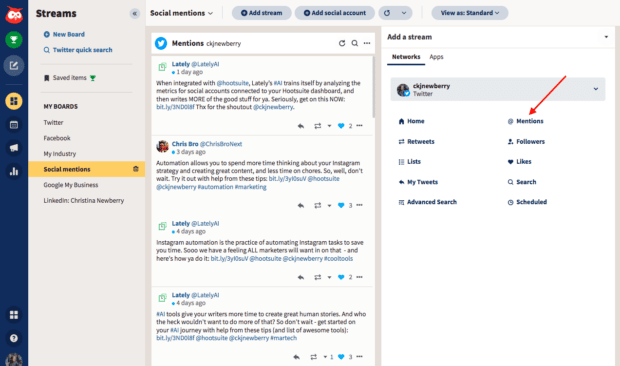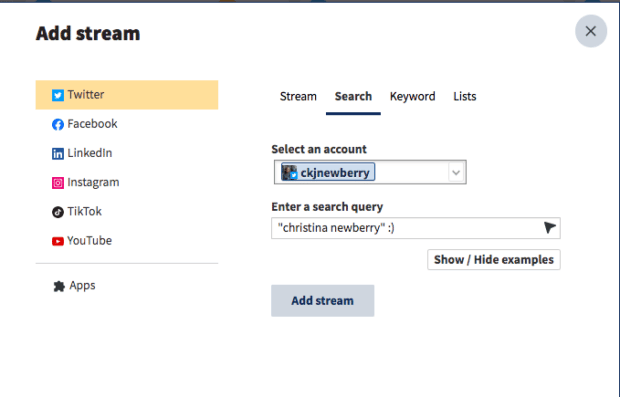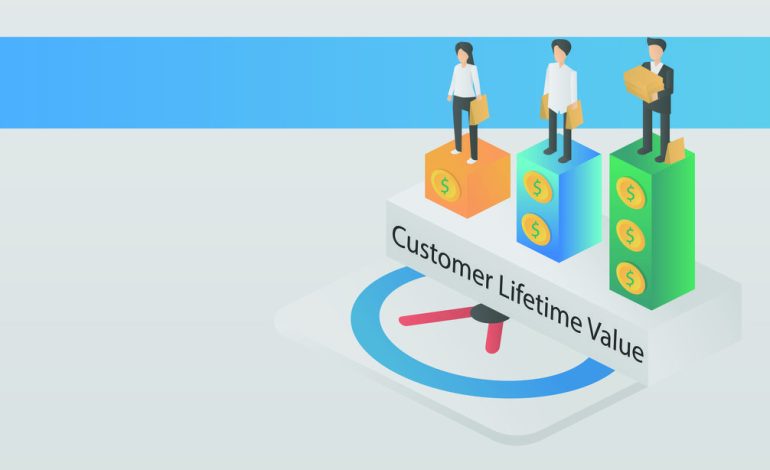What are people’s current thoughts about your brand? This might seem like a simple question. For marketers, however, it can be quite significant because it should guide all of your content creation and advertising campaigns.
Brands can monitor online discussions about themselves and their rivals in real time by using social media sentiment analysis. Simultaneously, individuals get measurable perceptions of how well or poorly they are perceived.
Sentiment research on social media ensures that you are aware of how each decision a brand takes impacts customer perception and brand loyalty. It can sound difficult. However, there are several tools available to assist you in collecting and evaluating the social media data required to pinpoint your brand’s position.
What is Social Media Sentiment Analysis?
Are your customers (and potential customers) talking positively about your brand on social media? You could do a quick scan of your comments, tagged posts, and other mentions to see what they are saying about you and what the general sentiment is, but that would take up quite a bit of time and likely wouldn’t get you the results you’d like.
Sentiment analysis is meant to help you understand how your brand is perceived; it’s an automated process that collects and analyzes information related to how people talk about your brand on social media and determines the emotional tone (positive, negative, or neutral) behind that message.
Social media sentiment analysis is the process of collecting and analyzing information on how people talk about your brand on social media. Rather than a simple count of mentions or comments, sentiment analysis considers emotions and opinions.
Social media sentiment analysis is sometimes called “opinion mining.” That’s because it’s all about digging into the words and context of social posts to understand the opinions they reveal. Measuring social sentiment is an important part of any social media monitoring plan.
To conduct sentiment analysis, social media monitoring tools use natural language processing (NLP) and machine learning (ML) to analyze and classify the sentiment expressed in social media posts and comments and decipher if a message is positive, negative, or neutral.
Sentiment analysis is often used within customer service teams. Since these teams work incredibly closely with customers on social media, they hear from their most vocal users about what features or products need improvement. Sentiment analysis can help them analyze customer feedback, collect common complaints, and identify gaps in their product or service offerings.
An example of sentiment analysis can be found with Yewo, a social-impact jewelry company; they received a lot of customer complaints that the brass on their jewelry tarnished over time. Thanks to sentiment analysis, they decided to upgrade from brass to gold-plating, ultimately making their customers happy and improving the product.
How to Run a Social Media Sentiment Analysis
In the section below, we get into some powerful tools you can use to help make social sentiment analysis faster, easier, and more accurate. But if you’re not yet ready to invest in specialized social media sentiment analysis tools, you can get started with a bit of extra research.
1. Monitor your mentions
The first step of social media sentiment analysis is to find the conversations people are having about your brand online. The challenge is that they won’t always tag you in those conversations. Fortunately, you can set up Hootsuite streams to monitor social channels for all mentions of your brand, even when you’re not tagged. Here’s how to collect them all in one place.
In the Hootsuite dashboard, add a stream for each of your social accounts. This will track the mentions where people tag your accounts on social.

You might want to organize all of your Mentions streams into a Social Mentions board to make them easier to view at a glance. On some social media platforms, you can even track the posts where you’re not tagged:
- For Instagram, you can monitor hashtags related to your products or brand name.
- For Twitter, you can use hashtags or keywords.
Be sure to create streams for your brand name and your product or service names.

Again, a board can be a helpful way to organize all of these streams on one screen.
2. Analyze the sentiment in your mentions
Next, you’ll look for terms that indicate sentiment within your mentions. Think about the kinds of positive or negative words people might use to talk about your brand. Examples might include:
- Positive: love, amazing, great, best, perfect
- Negative: bad, awful, terrible, worst, hate
There will likely be other terms specific to your product, brand, or industry. Make a list of positive and negative words and scan your mentions for posts that include these terms.
For Twitter, you can set Hootsuite up to do some of this work automatically. In the dashboard, create a search stream using your name plus 🙂 to indicate positive sentiment. Then create a search stream using your name plus 🙁 to indicate negative sentiment.

If you’re tracking sentiment manually, keep in mind that you need to watch out for the context. Is someone being sarcastic when they say they had “the best” customer experience with your brand?
3. Calculate your social sentiment score
You can calculate your social sentiment score in a couple of ways:
- Positive mentions as a percentage of total mentions
- Positive mentions as a percentage of mentions that include sentiment (removing neutral mentions)
Which method you use doesn’t really matter, as long as you are consistent. That’s because the most important thing to watch for is change.
The second method will always result in a higher score.
Most business owners and marketers will say that the most important thing to the success of your business is to listen to your customers – and we couldn’t agree more. Ultimately, sentiment analysis can help your business succeed by giving you the tools to listen in to what your customers are saying. But the benefits don’t stop there:
- Fine-tune your marketing strategy: By understanding customer sentiment, you can gain valuable insights (such as what type of content your audience enjoys and how they perceive your brand) that you can use to inform your social media marketing strategy, thus improving engagement and brand reputation.
- Builds community: Listening to your audience and taking the time to reply and engage with them helps you build connections and a loyal community; plus, it helps you stand apart from other businesses that aren’t as responsive.
- Shows you care: By listening in and replying to comments, you’re showing your followers (and customers) that you care, that you’re responsive, and that their feedback matters.
- Provide customer support: One study showed that social media is the second most popular channel for customers to communicate with a brand (and the first for Millennial customers).
- Prevent social media crises: If you’re listening in to your social media community regularly, you’ll be able to catch on to social media crises early on and, hopefully, prevent them from completely snowballing.
- Identify new opportunities: By actively listening in, you can identify gaps in your offering, gain inspiration for new content, or discover areas where you need to improve.
Best Social Media Sentiment Analysis Tools
Hootsuite is a powerful tool for collecting the data you need for sentiment analysis. These tools take things a step further by providing that analysis for you.
1. Hootsuite Insights Powered by Brandwatch
Hootsuite Insights powered by Brandwatch allows you to use detailed Boolean search strings to monitor social sentiment automatically. You’ll also get word clouds showing the most common words used to talk about your brand. Plus, charts that benchmark your social sentiment against your competitors.
In addition to positive and negative sentiments, Hootsuite Insights tracks specific emotions, like anger and joy, over time. This allows you to look for sudden changes or ongoing trends. You can also filter sentiment by location or demographics, so you can see how sentiment varies across your audience. There’s also an AI analysis option to automatically identify the causes of significant changes in sentiment.
Alerts are another handy feature that allows you to be notified if there’s a sudden change in sentiment. Then you can get ahead of any issues before they get out of control.
2. Mentionlytics
Mentionlytics’s pitch is: “Discover everything that is being said about your brand, your competitors or any keyword.” You can broaden the scope of your search to see what people are saying about your brand all over the internet. There’s a built-in sentiment analysis feature that works in multiple languages.
3. Digimind
Digimind identifies and analyzes all the relevant conversations about your brand and competitors. It pulls information from more than 850 million web sources, so you know you’re getting a comprehensive view of sentiment toward your brand.
You can also analyze mentions and apply filters to highly customize your sentiment analysis process.
4. Crowd Analyzer
Crowd Analyzer is an Arabic-language social listening and sentiment analysis tool. This is especially important for brands with an Arabic-speaking target audience. Other social sentiment tools do not generally have the capability to recognize sentiment in Arabic posts.
5. TalkWalker
TalkWalker gathers information from more than 150 million sources. The tool then uses artificial intelligence to analyze sentiment, tone, emotions and much more.
Read Also: Customer Lifetime Value (CLV) Modeling and Analysis
The benefits of tracking social media sentiment are a little bit circular. For example, tracking social sentiment helps you better understand your audience, which in turn helps you improve social sentiment.
So, if you were paying attention to the benefits section above, these strategies might sound a little familiar…
- Know your audience: When you know your audience well, you can craft messaging that connects with them. Basically, it boils down to this: Give your audience more of what they want and less of what they don’t.
- Engage: Respond to comments, mentions, and direct messages. Maximize positive interactions while providing a quick resolution to any negative mentions.
- Play to your strengths: Use social sentiment to understand what your audience thinks is great about your brand — and what they think is not so hot. While you work on improving the lagging areas, play up your strengths. Provide value while remaining true to your brand identity.
How do You Conduct Sentiment Analysis on Social Media?
Sentiment analysis on social media is the process of gauging and comprehending the feelings and viewpoints of your audience through their online postings, comments, reviews, and feedback. It can assist you in tracking the perception of your brand, determining the problems that customers are facing, enhancing your goods and services, and refining your marketing strategies. This post will teach you how to perform a sentiment analysis on social media and what insights you may get from it.
Choose your tools and platforms
The first step of conducting a social media sentiment analysis is to choose the tools and platforms that suit your goals and budget. You can use a variety of software and applications that can automatically analyze the tone, mood, and attitude of your social media data using natural language processing (NLP) and machine learning (ML) techniques.
Some examples are Hootsuite Insights, Sprout Social, Brandwatch, and Mention. You can also use social media platforms’ native analytics features, such as Facebook Insights, Twitter Analytics, and Instagram Insights, to get a basic overview of your audience’s reactions and engagement.
Define your keywords and queries
The next step is to define the keywords and queries that you want to track and analyze on social media. These can be related to your brand name, products, services, competitors, industry, or topics of interest. You can use hashtags, mentions, keywords, phrases, or Boolean operators to create your queries. For example, if you want to analyze the sentiment of your customers who bought your new product, you can use a query like: “brand name” AND “new product” AND (love OR hate OR like OR dislike). This will help you narrow down your results and focus on the most relevant and specific data.
Collect and categorize your data
The third step is to collect and categorize your data based on your queries and tools. You can use the tools and platforms that you chose in the first step to gather and filter your social media data from different sources, such as Facebook, Twitter, Instagram, YouTube, blogs, forums, and review sites.
You can also set the time frame, location, language, and other criteria that you want to analyze. Then, you can categorize your data into three main sentiment groups: positive, negative, and neutral. You can also use more granular categories, such as happy, angry, sad, surprised, etc., depending on your needs and objectives.
Analyze and visualize your data
The fourth step is to analyze and visualize your data using the tools and platforms that you chose in the first step. You can use various metrics and indicators to measure and understand the sentiment of your social media data, such as sentiment score, sentiment polarity, sentiment distribution, sentiment intensity, sentiment trends, and sentiment drivers.
You can also use charts, graphs, tables, dashboards, and reports to visualize your data and make it easier to interpret and communicate. For example, you can use a pie chart to show the percentage of positive, negative, and neutral sentiment in your data, or a line chart to show the changes in sentiment over time.
Gain insights and take action
The final step is to gain insights and take action based on your social media sentiment analysis. You can use the data and visualization that you generated in the previous steps to identify the strengths and weaknesses of your brand, products, services, competitors, industry, or topics of interest. You can also use the data and visualization to discover the opportunities and threats that you can leverage or avoid.
For example, you can use sentiment analysis to improve your customer service, enhance your product features, create more engaging content, target new segments, or launch new campaigns.
Finally
You never want your brand to fall into a crisis. But if it happens, monitoring social sentiment can help you spot the problem early. You can implement your crisis response plan to minimize negative sentiment or avoid it entirely.
In the BMW example above, the car company took 48 hours to reply to the heated seats controversy on Twitter, and another day to get an official statement up on its website. By then, the issue had gained significant media coverage, making it harder for BMW to undo the damage. Had they responded within the day, they might have been able to correct the narrative before it got out of control.
Setting up automatic alerts for spikes in mentions and sentiment is an important early-warning system for brand crisis management.


